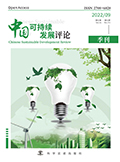

本研究深入探讨了京津冀地区与国际社会在协同减排政策方面的对比, 并研究了不同的激励机制以促进区域减排合作。面对全球气候变暖的挑战, 中国已经制定目标, 力争在2030年前达到碳排放峰值, 并在2060年前实现碳中和。对于经济繁荣、人口稠密的京津冀地区而言, 其在协同减排方面的进展对于达成这些关键目标发挥着决定性作用。研究指出, 京津冀地区的碳排放网络存在“核心-边缘”结构, 北京和天津作为核心节点在区域碳排放治理中起着关键作用。然而, 该地区的协同度稳定性不足, 且减排耦合程度呈现波动, 与各自的碳减排治理成效紧密相关。本研究对比了发达国家如美国、日本、澳大利亚和德国在协同减排方面的进展, 并总结了其对中国的启示。这些国家通过国家自主贡献 (NDCs) 、立法、技术创新和国际合作等方式展现了减排承诺和行动。中国在协同减排方面也取得了进展, 但面临市场化机制不完善、碳市场交易不活跃等挑战。研究设计了三种激励机制: 绝对数量机制、相对比例机制和经济补偿机制, 并通过模型分析评估了这些机制在不同情况下的效果。绝对数量机制为各子区域设定固定减排量, 相对比例机制依据各区域基线排放设定减排比例, 而经济补偿机制允许区域间进行经济交易以弥补减排成本差异。研究还提出了促进京津冀地区实现碳中和目标的公平合理的收益分配方案。结论认为, 相对比例机制和经济补偿机制在考虑区域差异和经济代价方面更为有效, 能够更好地实现协同减排。
This study explores in depth the comparison between the Beijing-Tianjin-Hebei region and the international community in terms of collaborative emission reduction policies, and examines different incentive mechanisms to promote regional emission reduction cooperation. Faced with the challenge of global warming, China has set a goal to peak its carbon emissions by 2030 and become carbon neutral by 2060. For the economically prosperous and densely populated Beijing-Tianjin-Hebei region, progress on coordinated emissions reductions is crucial to achieving these key goals. Research has shown that the carbon emission network in the Beijing-Tianjin-Hebei region has a “core-edge” structure, and Beijing and Tianjin, as core nodes, play a key role in regional carbon emission governance. However, the stability of cooperation degree in this region is insufficient, and the coupling degree of emission reduction fluctuates, which is closely related to the effectiveness of respective carbon emission reduction governance. This study compares the progress of developed countries such as the United States, Japan, Australia, and Germany in collaborative emission reduction, and summarizes its implications for China. These countries have demonstrated their commitment and action to reduce emissions through nationally determined Contributions (NDCs) , legislation, technological innovation and international cooperation. China has also made progress in coordinated emission reduction, but faces challenges such as imperfect market-oriented mechanisms and inactive carbon market trading. Research designs three incentive mechanisms: absolute quantity mechanism, relative proportion mechanism and economic compensation mechanism, and evaluates the effect of these mechanisms in different situations through model analysis. The absolute quantity mechanism sets a fixed emission reduction rate for each sub-region, the relative proportion mechanism sets a reduction rate based on the baseline emissions of each region, and the economic compensation mechanism allows economic transactions between regions to make up for the difference in emission reduction costs. The study also proposed a fair and reasonable revenue distribution plan to promote the realization of carbon neutrality in the Beijing-Tianjin-Hebei region. It is concluded that the relative ratio mechanism and economic compensation mechanism are more effective in considering regional differences and economic costs, and can better achieve collaborative emission reduction.